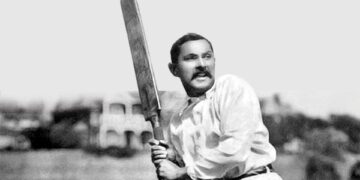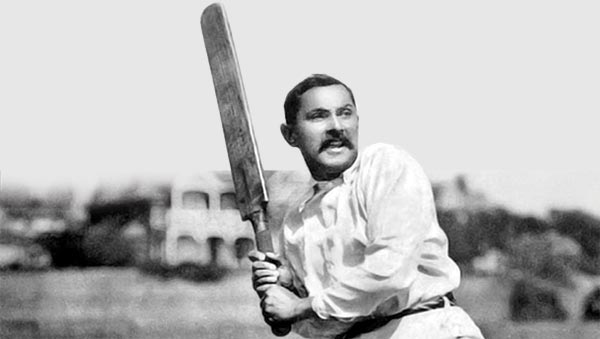 NEW DELHI: Lord’s is known as the Mecca of cricket. Any batsman worth his salt wants to score a century on the hallowed turf situated in the centre of London. Lord’s is not famous merely as the home of cricket, but is also known as the world’s second oldest sports museum.
NEW DELHI: Lord’s is known as the Mecca of cricket. Any batsman worth his salt wants to score a century on the hallowed turf situated in the centre of London. Lord’s is not famous merely as the home of cricket, but is also known as the world’s second oldest sports museum.
For the cricket enthusiasts, there are plenty of items here which take them back into the bygone days. For instance, for an Indian fan, there is the bat used by Ranjitsinhji, better known as Ranji, with which he scored a magnificent unbeaten 154 during his Test debut against England in 1896. That bat is so well maintained that it almost looks like a new one.
Bodyline series
Similarly, one can also see the ball which was used during the infamous Bodyline series between England and Australia in 1932- 33. England captain Douglas Jardine in an attempt to thwart the run machine Don Bradman had instructed his bowler Harold Larwood and Bill Voce to bowl at Bradman’s body rather than his stumps. A lot of Australian batsmen, including Bradman, got injured in this which was one of most controversial Test series between England and Australia.
Recently, another chapter was added with the MCC’s new documentation of ‘No Foreign Field: MCC and the Empire of Cricket’. This exhibition, which was conducted by Neil Robinson, Head of Heritage and Collections at the Marylebone Cricket Club (MCC), attempts to show the spread of cricket, its association with the British empire and the winds of change at the MCC over the decades.
Conflict and transition
This exhibition is divided across segments of First Contact, Building Connections, Tours and the Imperial Bond, Conflict and Transition. The new exhibition, which opened recently, is now part of any tour of the Lord’s ground until early next year.
“The story of this exhibition is essentially the global spread of cricket around the world and that tracked the spread of the British empire,” said Robinson.
He drew an interesting analogy. “The same way that the British empire was governed from London, cricket was governed from Lord’s by MCC. We look at how that sometimes caused conflict and how the power structures that were developing overseas began to draw that power balance away from Lord’s towards a new home in Asia (Dubai) where it stands today,” Robinson explained.
Fascinating insights
Interestingly. the new curation at the museum uses objects and artefacts from the MCC’s archives as a selfreflective exercise that throws up some fascinating insights, complete with a multimedia feel.
“The aim is to showcase a new way of thinking about the relationship between the MCC, cricket and empire,” said Dr Prashant Kidambi, a historian at Leicester University and author of ‘Cricket Country: An Indian Odyssey in the Age of Empire’, who collaborated on the project.
















